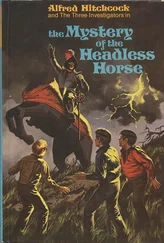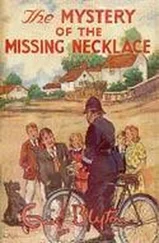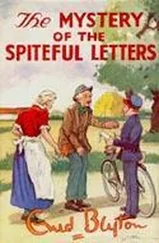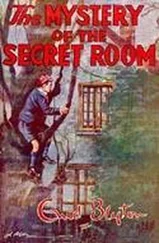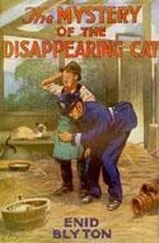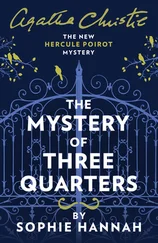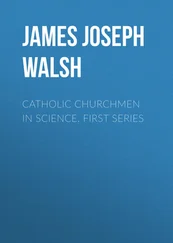It can be difficult to appreciate the devastating implications of these reflections. The Ascent of Man from knuckle-walking chimp to upright human seems so logical and progressive as to be almost self-evident, yet it conceals events that are without precedent in the whole of biology. The only consolation would be that man must have evolved somehow, but then the hope of understanding how would seem to evaporate with the revelation of the near-equivalence of the human and chimp genomes. There is nothing to suggest the major genetic mutations one would expect to account for the upright stance or that massively enlarged brain – leading the head of the chimp Genome Project to concede, as already cited, somewhat limply: ‘Part of the secret is hidden in there, we don’t know what it is yet.’ Or as a fellow researcher put it, rather more bluntly: ‘You could write everything we know about the genetic differences in a one-sentence article.’ The reports in 2006 of a familyin northern Turkey with a bizarre genetic defect that caused them to walk on all fours suggested, according to Professor Uner Tan of Cukurova University, the breakthrough of ‘a live model for human evolution’. Perhaps, but then perhaps not, as the anatomy of the family’s bones and muscles was otherwise entirely human, so with relatively short arms and long legs, their ungainly quadrupedal locomotion only served to emphasise the ‘full house’ of anatomical transformation necessary for the upright stance.
So, while the equivalenceof the human and chimp genomes provides the most tantalising evidence for our close relatedness, it offers not the slightest hint of how that evolutionary transformation came about – but rather appears to cut us off from our immediate antecedents entirely. The archaeological discoveries of the last fifty years have, along with Lucy and Turkana Boy, identified an estimated twenty or more antecedent species, and while it is obviously tempting to place them in a linear sequence, where Lucy begat Turkana Boy begat Neanderthal man begat Homo sapiens, that scenario no longer holds. Instead we are left with a bush of many branches – without there being a central trunk linking them all together.
‘Over the past five million yearsnew hominid species have regularly emerged, competed, co-existed, colonised the environment and succeeded or failed,’ writes palaeontologist Ian Tattersall. ‘We have only the dimmest of perceptions of how this dramatic history of innovation and interaction unfolded, but it is evident that our species is simply one more of its many terminal twigs.’
The methods of the New Genetics have confirmedthat all the human races – Negroes, Caucasians, Asians and so on – are genetically identical, thus all descendants of an entirely novel species, Homo sapiens, ourselves, who emerged it is presumed in east or south Africa in 120,000 BC before spreading out to colonise the world. But that leaves the ‘terminal twig’ of ourselves suspended in limbo, with no obvious attachment to those earlier branches of that evolutionary bush. The account of ourselves which until recently seemed so clear now seems permeated with a sense of the deeply inexplicable – whose implications we will return to after considering the second aspect of the riddle of that evolutionary trajectory: the Cromagnons with their ‘passion for art’.
THE RIDDLE OF THE ASCENT
Part 2: The Cultural Explosion and the Origins of Language
‘ Homo sapiens is not simplyan improved version of his ancestors, but a new concept, qualitatively distinct from them … A totally unprecedented entity has appeared on the earth. All the major intellectual attributes of modern man are tied up in some way with language.’
Ian Tattersall, Curator, American Museum of Natural History
The most striking feature of the arrival of modern man is its suddenness and completeness, epitomised most obviously by the beauty and originality of those artefacts he left behind: the ‘pride of lions’ portrayed in perspective on the walls of the Chauvet cave; the beads and jewellery for self-adornment in this and the ‘next’ world; drums fashioned from mammoths’ bones to celebrate, with singing and dancing, the wonders of the natural world; oil lamps, harpoons, spear-throwers. All the features in short – artistic, technical, economic and religious – that can be found in contemporary society.
The precipitating factor inthat cultural explosion must, by common consent, be tied up in some way with language. The Cromagnons had a ‘passion for art’, so an obvious starting point in searching for the qualitative difference that language might make, and which would distinguish them from their antecedents, is to ask what a painting or a sculpture of, say, a bison, is . It clearly is not a bison, nor the reflection of a bison, nor the imaginative figment of a bison – as in a dream. It is not a sculpture of a specific object, but rather a generalised image of a class of objects: it stands for, is symbolic of, bison in general. It is the idea of a bison. This ability of Cromagnon man to conceptualise things and feelings as ideas, and to express those ideas as words, introduces an entirely new dimension into the universe.
First, language – and it is a most extraordinary thing – allows us to ‘think’, by assigning words to objects and ideas. Then it becomes possible to express a logical idea by applying grammatical rules to the arrangement of those words, and linking them together sequentially in a sentence. And more, the faculty of language allows us to take those thoughts ‘brought into existence’ by language and insert them with complete precision into the minds of others for them to share, or to disagree with. Language makes the world intelligible, by allowing man to transmit his thoughts and experiences in the form of accumulated knowledge from generation to generation – leading, perhaps inevitably, to the moment at the close of the twentieth century when he would ‘hold in his mind’s eye’ the history of the universe he inhabits. Language makes it possibleto distinguish truth, the faithful reflection of reality, from falsehood, and this, as the philosopher Richard Swinburne points out, is the foundation of reason (obviously), but also of morality, for ‘it gives man the capacity to contrast the worth of one action to that of another, to choose what he believes worthwhile … and that gives us a conception of the goodness of things’. Thus humans, like all living things, are biological beings constrained by nature’s laws; nonetheless language liberates our mind from the confines of our material brain, allowing us to transcend time and space to explore the non-material world of thought, reason and emotion. So, ‘All the major intellectual attributes of modern man are tied up in some way with language,’ as Ian Tattersall argues. Where then did language come from?
The prevailing view, till recently, held that this remarkable faculty required no specific explanation, and could be readily accommodated within the standard evolutionary rubric of the transformation of the simple to the complex. Language is explained (or ‘explained away’) as an evolved form of communication, no different in principle from the grunts or calls of other species. ‘I cannot doubt,’ observed Darwin in The Descent of Man, ‘that language owes its origin to the imitation and modification of various natural sounds, the voice of other animals and man’s own instinctive cries…’ So too contemporary evolutionary texts portray human language as an improved method of communication over that of our primate cousins, while emphasising the similarities in the larynx and vocal cords (which, however, are not so similar as they appear) as evidence for language’s evolutionary origin. ‘Language evolved to enable humansto exchange information,’ observes Robin Dunbar of the University of Liverpool.
Читать дальше

